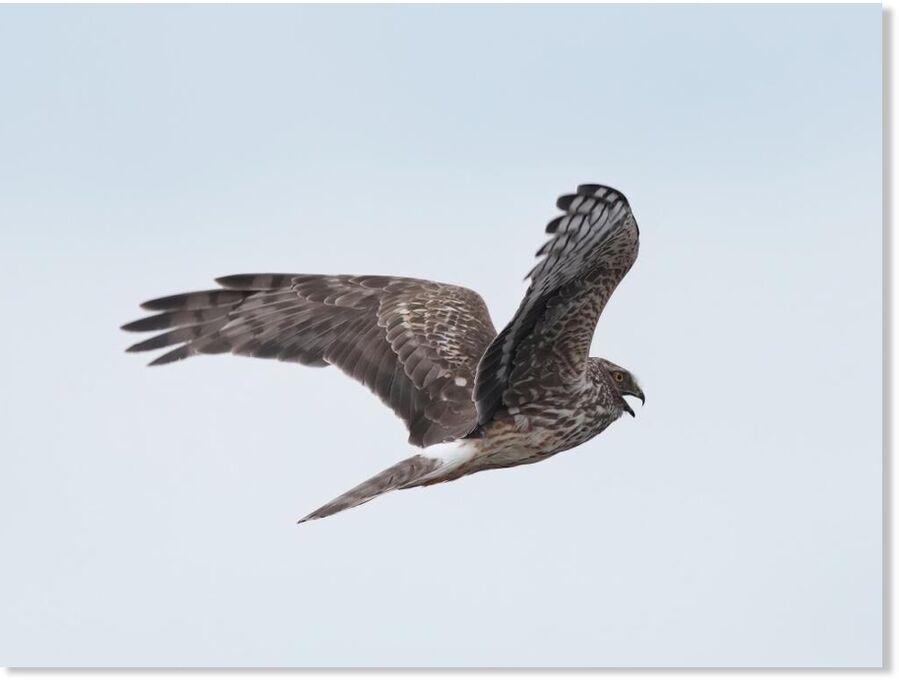
Female hen harrier
The higher and wetter North Pennines is the worst affected area, with the number of hen harrier nests on grouse moors expected to be down by as much as two-thirds compared with last year.
Other areas such as the Yorkshire Dales and the moors of the Forest of Bowland, appear to be faring slightly better.
Moorland Association members have still reported hen harrier nests on land managed for grouse shooting despite the difficult conditions. Some estates are reporting multiple nests, as has been the case in the last several years.
Both male and female hen harriers will provide food for their chicks but nesting success requires the female to be in good health in order to lay a clutch of eggs. This year is also thought to be a poor year for moorland vole numbers - one of the hen harriers' favoured foods.
Other local factors which may have affected the ground nesting hen harrier include disturbance by walkers or their dogs running off leads. Some places are also seeing predation by other birds of prey - a factor that is expected to increase with the boom in raptor numbers over the last few years.
Hen harrier numbers in England reached their highest point for 200 years in 2023 due to joint working over the past seven years between partners including the Moorland Association, Natural England, the Game & Wildlife Conservation Trust, the Hawk and Owl Trust and the National Gamekeepers' Organisation, which all signed up to support Defra's hen harrier action plan in 2016.
The action plan includes nest monitoring, diversionary feeding and brood management, which involves hen harrier chicks being taken from a nest to be reared in a specialist aviary and then released back in to suitable habitat once the chicks are old enough to hunt for themselves.
This collaborative approach helped rebuild the hen harrier population in England, from a low point of zero chicks born in 2013 to a record high of 141 chicks last year.
Other moorland bird species are also thought to be suffering this year. Land managers report that short-eared owl, lapwing, curlew, oystercatcher and red grouse are all nesting later or not attempting to nest in some areas, most likely due to the impact of the extended period of poor weather.
Source link

